Cause of fainting in elderly. Syncope in Elderly: Causes, Risks, and Management of Fainting in Older Adults
What are the main causes of syncope in elderly individuals. How does fainting impact senior health and safety. What treatments and preventive measures can reduce syncope episodes in older adults. How should caregivers respond to fainting spells in seniors.
Understanding Syncope: A Common Concern for Seniors
Syncope, commonly known as fainting, is a significant health issue that disproportionately affects the elderly population. This sudden, temporary loss of consciousness can be both frightening and dangerous, especially for older adults who are more susceptible to injuries from falls. Understanding the causes, risks, and management strategies for syncope in seniors is crucial for caregivers and healthcare providers alike.
What exactly is syncope?
Syncope is defined as a transient and sudden loss of consciousness accompanied by a loss of postural tone. In simpler terms, it’s a fainting spell where an individual briefly loses awareness and muscle control. While most people recover spontaneously from these episodes, they can be indicative of more serious underlying health conditions, particularly in older adults.
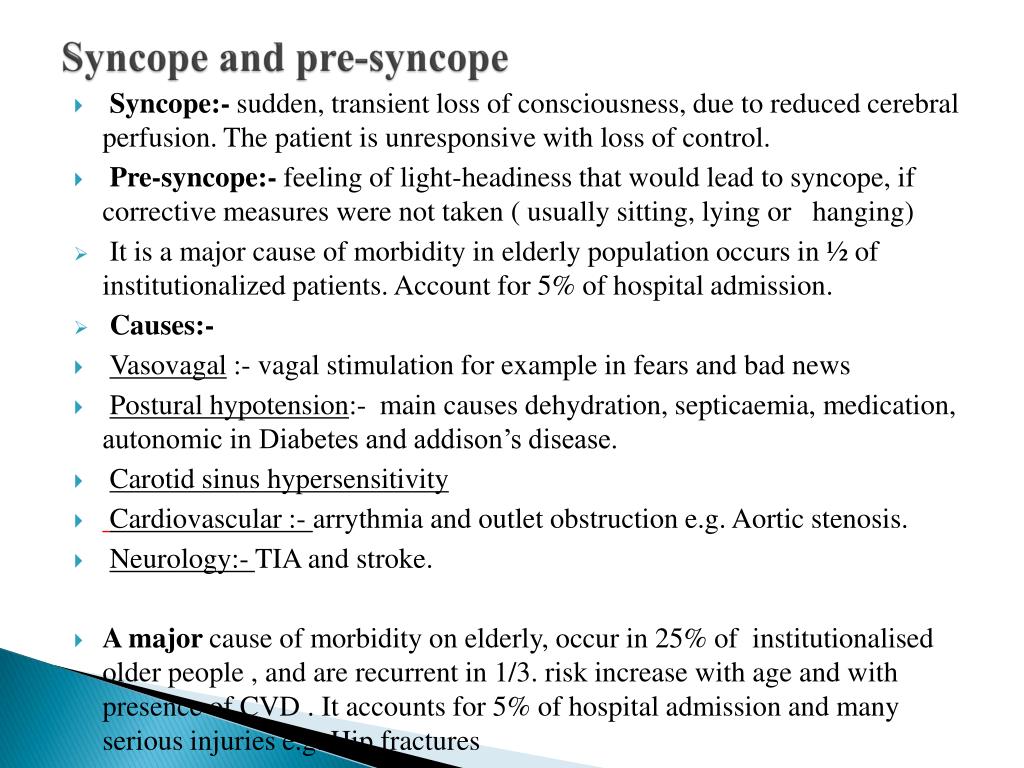
How common is syncope in the elderly?
Syncope is significantly more prevalent among seniors compared to younger individuals. Research indicates that patients over 70 years of age have a much higher rate of syncope and represent the majority of those hospitalized for this condition. In fact, syncope accounts for up to 3% of all emergency visits and 1-6% of hospital admissions in North America.
Primary Causes of Syncope in Elderly Adults
Understanding the root causes of syncope in seniors is essential for effective prevention and treatment. While the underlying mechanisms can vary, all instances of syncope result from a temporary loss of blood flow to the brain. Here are some of the primary causes in elderly individuals:
- Orthostatic hypotension: A sudden drop in blood pressure upon standing
- Reflex syncope: Often related to carotid sinus syndrome
- Heart disease: Various cardiovascular conditions can lead to fainting
- Neurological conditions: Issues affecting the brain and nervous system
- Dehydration: Insufficient fluid intake can contribute to fainting episodes
- Polypharmacy: Interactions between multiple medications may cause syncope
Why is orthostatic hypotension common in seniors?
Orthostatic hypotension, or a sudden drop in blood pressure upon standing, is particularly prevalent in older adults. This is often due to age-related changes in the cardiovascular system, decreased baroreceptor sensitivity, and the side effects of certain medications commonly prescribed to seniors. When blood pressure drops rapidly, it can lead to reduced blood flow to the brain, resulting in dizziness or fainting.
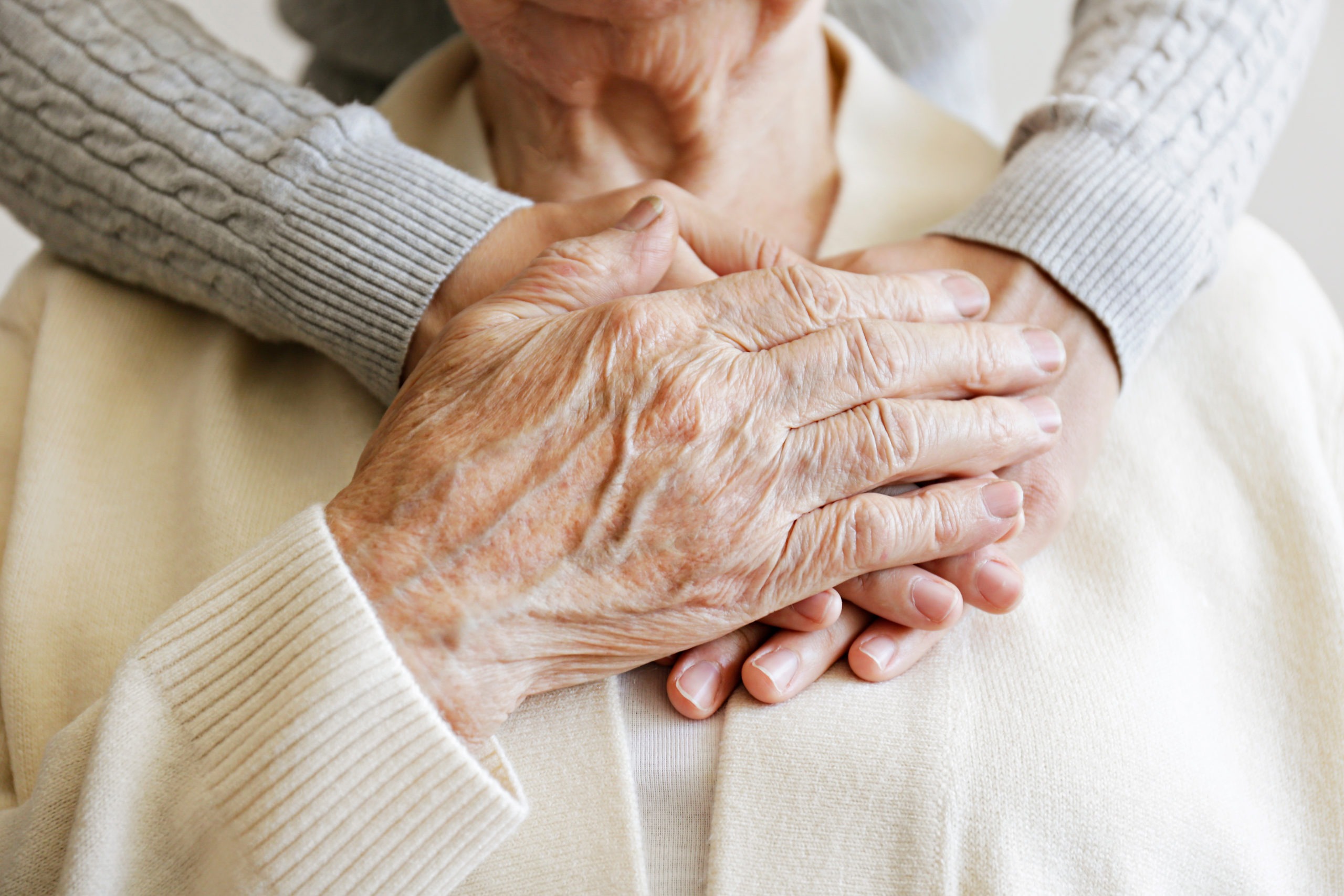
The Impact of Syncope on Senior Health and Safety
Syncope in elderly individuals is not just a momentary inconvenience; it can have serious implications for their overall health and well-being. The consequences of fainting episodes in seniors extend beyond the immediate loss of consciousness.
What are the risks associated with syncope in older adults?
The risks of syncope in seniors are multifaceted:
- Fall-related injuries: Sudden loss of consciousness can lead to falls, potentially resulting in fractures, head injuries, or other serious traumas.
- Reduced quality of life: Fear of fainting may cause seniors to limit their activities, leading to social isolation and decreased independence.
- Indicator of underlying conditions: Syncope can be a symptom of serious cardiovascular or neurological issues that require immediate attention.
- Decreased survival rates: Research suggests that certain types of syncope are associated with reduced survival rates in elderly populations.
Diagnostic Approaches for Syncope in Elderly Patients
When an older adult experiences a fainting episode, a thorough diagnostic evaluation is crucial to determine the underlying cause and develop an appropriate treatment plan. Healthcare providers employ a variety of methods to assess syncope in elderly patients.

What diagnostic tests are typically used for syncope in seniors?
The diagnostic process for syncope in older adults often includes:
- Comprehensive physical examination
- Detailed patient history, including medication review
- Blood pressure measurements in various positions
- Electrocardiogram (ECG) to evaluate heart rhythm
- Echocardiogram to assess heart structure and function
- Tilt-table test to monitor changes in symptoms with positional changes
- Blood tests to check for anemia, electrolyte imbalances, or other abnormalities
- Neurological evaluations if a brain-related cause is suspected
In some cases, despite thorough testing, the exact cause of syncope may remain unidentified. While this can be frustrating, it often indicates that the underlying condition is not severe.
Treatment Strategies for Syncope in the Elderly
Managing syncope in older adults requires a tailored approach based on the underlying cause and the individual’s overall health status. Treatment strategies can range from simple lifestyle modifications to more complex medical interventions.

How is syncope typically treated in elderly patients?
Treatment options for syncope in seniors may include:
- Medication adjustments: Modifying or discontinuing drugs that may contribute to fainting
- Compression stockings: To improve blood flow and prevent blood pooling in the legs
- Lifestyle changes: Such as increasing salt intake or elevating the head of the bed
- Pacemaker implantation: For certain types of heart-related syncope
- Hydration therapy: Ensuring adequate fluid intake to prevent dehydration-related episodes
- Physical counterpressure maneuvers: Teaching techniques to improve blood flow when feeling faint
The specific treatment plan will depend on the identified cause of syncope and may involve a combination of these approaches.
Preventive Measures and Lifestyle Modifications
Preventing syncope episodes in elderly individuals often involves a combination of lifestyle changes and preventive strategies. These measures can significantly reduce the risk of fainting and associated injuries.
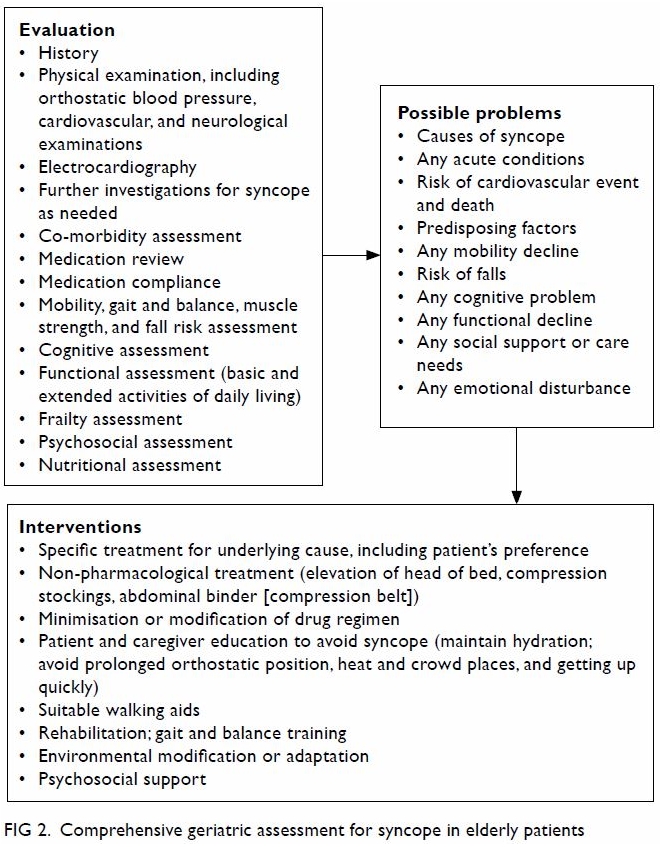
What can seniors do to reduce their risk of syncope?
Preventive measures for syncope in older adults include:
- Gradual position changes: Slowly transitioning from lying to sitting to standing
- Adequate hydration: Maintaining proper fluid intake throughout the day
- Regular exercise: Engaging in activities that improve cardiovascular health and balance
- Avoiding triggers: Identifying and steering clear of situations known to induce fainting
- Proper medication management: Regularly reviewing medications with healthcare providers
- Fall prevention strategies: Implementing home safety measures to reduce injury risk
- Compression garments: Wearing compression stockings to improve circulation
The Role of Caregivers in Managing Syncope
Caregivers play a crucial role in the management and prevention of syncope in elderly individuals. Their vigilance and support can significantly impact the safety and well-being of seniors prone to fainting episodes.
How can caregivers best support seniors with syncope?
Caregivers can assist in managing syncope by:

- Learning to recognize warning signs of an impending fainting episode
- Creating a safe environment to minimize injury risk during falls
- Assisting with medication management and adherence to treatment plans
- Encouraging proper hydration and nutrition
- Accompanying seniors during medical appointments and tests
- Helping implement lifestyle changes recommended by healthcare providers
- Providing emotional support and reassurance to alleviate anxiety related to syncope
When to Seek Emergency Care for Syncope
While many instances of syncope in elderly adults are not immediately life-threatening, certain situations require prompt medical attention. Recognizing these scenarios is crucial for caregivers and seniors alike.
Under what circumstances should emergency care be sought for syncope?
Emergency medical attention is necessary if:
- The fainting episode is accompanied by chest pain or shortness of breath
- There is a sudden, severe headache before or after fainting
- The person remains unconscious for more than a few minutes
- There are signs of a serious injury from falling
- The individual has a history of heart disease and experiences syncope
- Fainting occurs during physical exertion or in unusual circumstances
- There are repeated episodes of syncope in a short period
In these cases, immediate medical evaluation is crucial to rule out potentially life-threatening conditions.

Ongoing Research and Future Directions in Syncope Management
The field of syncope management in elderly populations continues to evolve, with ongoing research aimed at improving diagnosis, treatment, and prevention strategies. Understanding these developments can help caregivers and seniors stay informed about the latest advancements in syncope care.
What are some promising areas of research in syncope management for seniors?
Current areas of research and future directions include:
- Advanced diagnostic tools: Development of more sensitive and specific tests for identifying syncope causes
- Personalized treatment approaches: Tailoring interventions based on individual risk factors and genetic profiles
- Wearable technology: Exploring the use of smart devices for continuous monitoring and early warning systems
- Novel pharmacological interventions: Investigating new medications to prevent or manage syncope
- Improved rehabilitation programs: Developing specialized exercise regimens to reduce syncope risk
- Telemedicine applications: Enhancing remote monitoring and management of syncope in elderly patients
As research progresses, these advancements may lead to more effective strategies for managing syncope in the elderly population, potentially reducing its impact on quality of life and overall health outcomes.
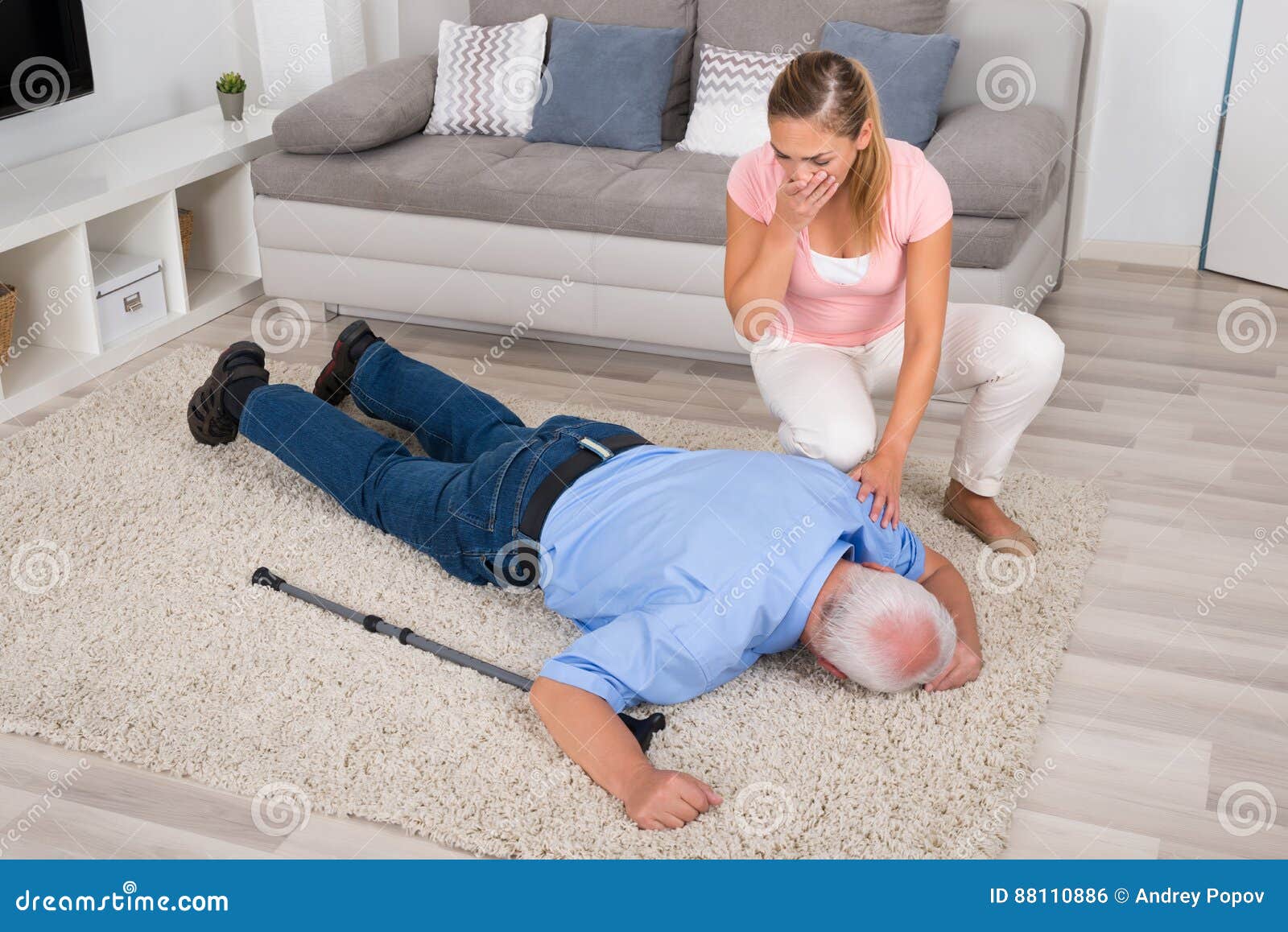
Seniors and Syncope: The 411 on Fainting
If you’ve ever been around someone who has fainted—or if you’ve ever fainted yourself—you know it’s a frightening ordeal. Clinically known as “syncope” (pronounced SIN-co-pee), fainting is not only much more common in older adults but also associated with a reduced survival rate—and therefore of particular importance for senior caregivers. Here’s a closer look at syncope, along with what all caregivers need to know about caring for someone with this condition.
About Syncope
According to “Syncope in Older Adults” published in the academic journal Geriatrics and Aging, “Syncope is defined as a transient and sudden loss of consciousness with a loss of postural tone. Patients with syncope constitute up to three percent of all emergency visits and one to six percent of all hospital admissions in North America. Patients over 70 years of age have a much higher rate of syncope than their younger counterparts and represent the majority of patients hospitalized with syncope. Unless it is vasovagal, syncope is related to decreased survival.”
Unless it is vasovagal, syncope is related to decreased survival.”
When people experience syncope—or “faint”—they lose consciousness and become unresponsive while their muscles go slack. Prior to this, some people feel dizzy or hear a buzzing sound in their ears. While most people recover spontaneously on their own from a fainting episode, there is cause for concern for several reasons. For starters, syncope is not a disease in itself but may be indicative of a more serious problem. Additionally, injuries can occur during the episode.
What Causes Syncope?
Syncope results from a temporary loss of blood flow to the brain. While some causes are harmless, in other cases it can be life-threatening. In seniors, orthostatic hypotension (a sudden drop in blood pressure) reflex syncope (a side effect of carotid sinus syndrome), and heart disease are the most common causes of fainting. Conditions of the brain and nervous system, dehydration, and polypharmacy are all associated with syncope, according to HealthinAging. org.
org.
If someone for whom you’re caring has a fainting spell, immediate follow-up with his/her healthcare team is important as this can help determine any potentially dangerous underlying conditions. Based on a physical exam and patient history, the healthcare team will identify the most appropriate tests aimed at determining the cause of the episode. Tests may include blood pressure measurement, evaluations for heart disease, and a “tilt-table test,” which tracks changes in symptoms in positions ranging from lying down to upright.
In some cases, the provider will not be able to ascertain the cause. While this can be disconcerting, it’s also good news as it most likely means the condition is not severe.
Syncope Treatment and Management
Because syncope has many causes, treatments are equally diverse. In some cases, it may be as simple as making changes to medications, while heart-related factors may mandate aggressive medical interventions, such as a pacemaker.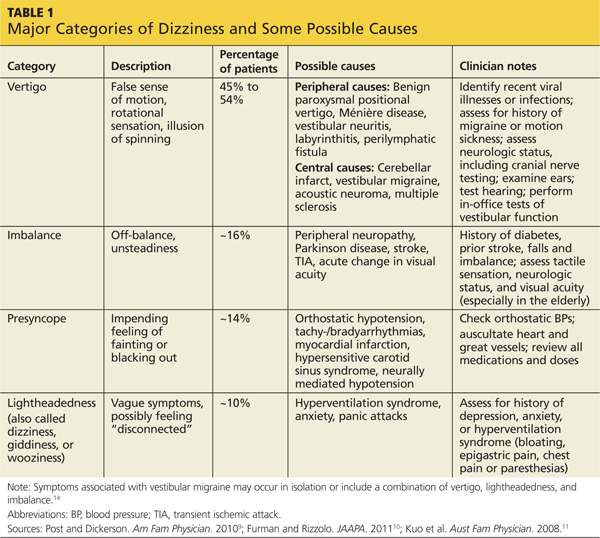
When syncope is caused by orthostatic hypotension, the healthcare provider may recommend simple changes to reduce the risk of fainting, including wearing compression stockings, sitting for a while and/or exercising your legs before getting up in the morning, elevating the head of the bed, and increasing salt intake. Furthermore, if your aging loved one’s syncope is linked with a certain “trigger,” avoiding these can also mitigate the risk of fainting episodes.
If someone for whom you’re caring starts experiencing syncope, some lifestyle changes may also be in order. Depending on the circumstances and the laws of the state in which you live, driving may also be prohibited. Additionally, avoiding stairs and hard surfaces and implementing basic fall prevention precautions can reduce the risk of sustaining injuries during an episode.
mmLearn.org offers a large library of free videos for caregivers of older adults, covering topics pertaining to senior care. Whether you are a healthcare professional or a family caregiver, if you are caring for an older adult we know that you will find mmLearn.org an essential learning and guidance tool for all of your caregiver training needs. For more free caregiver training materials, access our database of free online caregiver videos today.
Whether you are a healthcare professional or a family caregiver, if you are caring for an older adult we know that you will find mmLearn.org an essential learning and guidance tool for all of your caregiver training needs. For more free caregiver training materials, access our database of free online caregiver videos today.
Causes of Syncope in Elderly Adults
Author:
Kateri Swavely-Verenna
Subscribe
Remember that friend in high school who fainted the day you typed your blood in biology class? Then you are already familiar with syncope. Syncope, or sudden fainting, can happen to anyone at any age. But there is a higher risk of sudden fainting in elderly adults due to their potential other health conditions and danger of serious injury when falling.
Causes of Syncope in Elderly Adults
Dizziness and fainting in elderly adults is caused by a drop in blood pressure and loss of blood flow to the brain. This is called vasovagal syncope and is the most common cause of syncope in elderly adults. For example, if you sit for a long period of time and stand up suddenly, most of your blood has settled to the lower half of your body. Your heart has to work a bit harder to keep the blood flowing up to your brain. This could cause a fainting spell in an elderly adult with a weak heart.
Some other causes of fainting in seniors related to vasovagal syncope include:
Seeing blood or having blood drawn
Standing for long periods of time
Heat exposure
Anxiety/Intense Emotional Distress or Fear of bodily injury
Dehydration
Symptoms of Syncope
Knowing what causes syncope in the elderly can help you be aware of your surroundings and avoid triggers that could lead to fainting. But since that is not always possible, it is important to be aware of signs that alert you that you may be about to pass out. These signs include:
But since that is not always possible, it is important to be aware of signs that alert you that you may be about to pass out. These signs include:
If you notice any of these symptoms and are prone to fainting, lie down with your legs elevated above your head to encourage blood flow to your brain. If you can’t lay down, sit with your head between your knees until the feelings pass. While syncope itself is generally harmless, the danger lies in what is going on around you when you faint. For example, you don’t want to hit your head as you fall or have a fainting spell at the top of the stairs.
There is no true syncope treatment for elderly adults – more symptom management, as mentioned above. Your doctor may run some tests to see if the fainting spells are an indicator of a more serious cardiovascular condition such as cardiomyopathy. It is most important to be aware of the condition and notice if an episode is approaching so you can stay safe.
To learn more about our home care services, contact our caregiving team today at
(877) 268-3277 or
find a caregiver near you.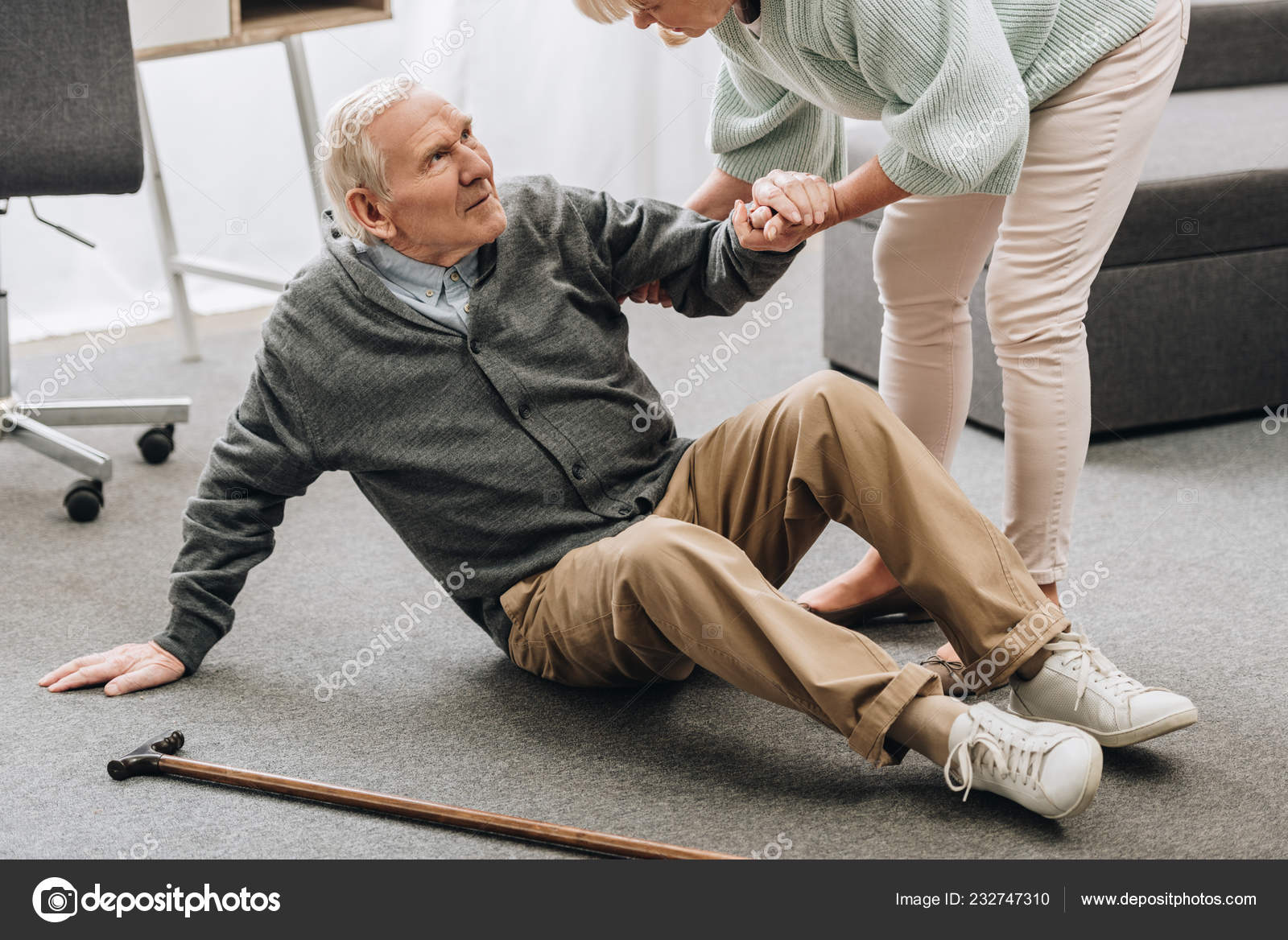
To learn more about our home care services,
contact our caregiving team today online or call us at
(877) 268-3277.
Categories
- Process of Aging
- Prev Post
- Next Post
Fainting, sudden loss of consciousness, syncope – causes, examination and treatment in Astrakhan| Symptoms
Heart valve disease and cardiomyopathy (aortic stenosis, mitral stenosis or prosthetic valve dysfunction, hypertrophic cardiomyopathy)
Signs: Fainting during or after exercise and then rapid recovery. In young or old people. Often in patients with known heart murmurs.
Irregular heart rhythm (slow or fast)
Signs: Fainting without warning and then recovering immediately after waking up can occur in any position. Sometimes in patients taking certain medications, especially heart medications (antiarrhythmic drugs).
Pulmonary embolism (blood clot block)
Signs: Often sharp pain when breathing, shortness of breath, rapid breathing and rapid heartbeat. Sometimes a slight fever, coughing up blood, or shock. More likely in patients with risk factors for pulmonary embolism (history of blood clots, recent surgery, leg surgery, prolonged bed rest, leg cast or splint, older age, smoking, or cancer).
Myocardial infarction
Signs: Usually in the elderly. Sometimes chest discomfort, heartburn, shortness of breath, or nausea.
Severe allergic reaction (anaphylactic shock)
Signs: Fainting during or shortly after exposure to an allergen, such as after taking a medication or being bitten by an insect. Excessive sweating and pale skin color. In patients with or without a history of allergies. Usually urticaria, shortness of breath, or localized edema (angioneurotic edema).
Low blood sugar (hypoglycemia)
Signs: Fainting after other symptoms develop, such as confusion, trembling, and sweating. Lack of response or confusion that does not resolve until specific treatment is given. Almost always in people with diabetes.
Lack of response or confusion that does not resolve until specific treatment is given. Almost always in people with diabetes.
Increased chest pressure (due to coughing or straining to urinate or defecate)
Signs: Fainting during activities that increase chest pressure. Predictive symptoms (dizziness, nausea, or sweating). Recovery is quick, but the person may feel unwell for several hours.)
Strong emotion (pain, fear or stress from the sight of blood)
Signs: Fainting at the peak of strong emotions. Predictive symptoms (dizziness, nausea, or sweating). Recovery is quick and the cause is usually obvious.
Migraine
Signs: Fainting is sometimes preceded by disturbances in sensation, vision or other functions (aura), increased sensitivity to light.
Standing for long periods of time
Signs: Cause evident from history. No other symptoms.
Pregnancy
Signs: In healthy women of childbearing age. No other symptoms. Usually in women with early pregnancy or unrecognized pregnancy.
No other symptoms. Usually in women with early pregnancy or unrecognized pregnancy.
Hyperventilation
Signs: Frequent tingling around the mouth or in the fingers to the point of fainting. Usually during or in response to a situation of emotional stress. Rapid breathing, which may go unnoticed by the patient or others. Usually in younger people.
Blood pressure medications
Signs: Dizziness and then fainting after a few minutes of sitting or standing. The drop in blood pressure in the standing position, revealed during the examination.
Drugs that can cause abnormal and accelerated heart rhythm
Signs: Sometimes palpitations and fainting. Sudden loss of consciousness.
Autonomic nervous system dysfunction
Signs: Dizziness and then fainting after a few minutes of sitting or standing. The drop in blood pressure in the standing position, revealed during the examination.
Deterioration of physical condition (prolonged bed rest)
Signs: Dizziness and then fainting after a few minutes of sitting or standing.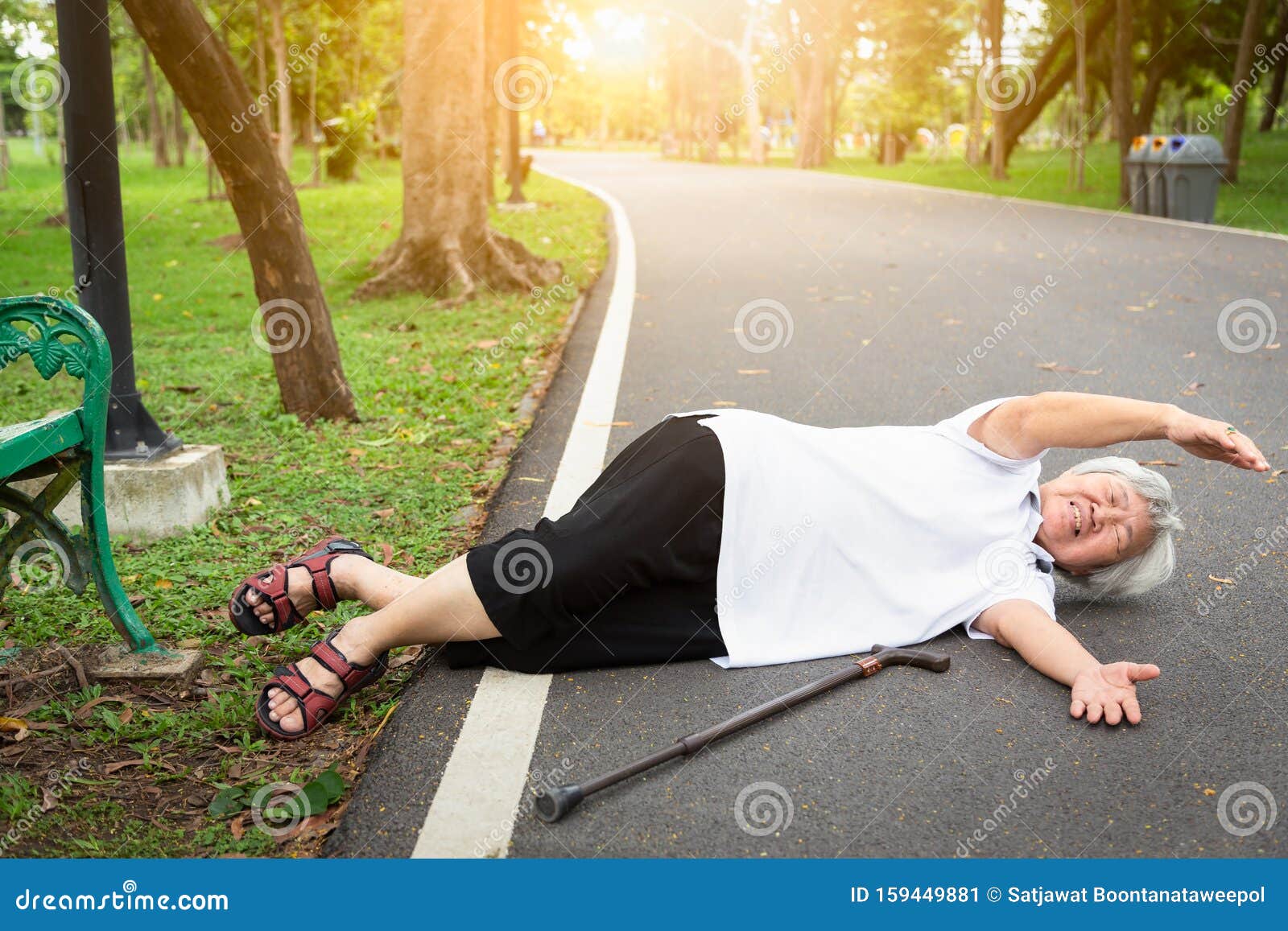 The drop in blood pressure in the standing position, revealed during the examination.
The drop in blood pressure in the standing position, revealed during the examination.
Anemia
Signs: Dizziness and then fainting after a few minutes of sitting or standing. Chronic fatigue. Sometimes dark stools or heavy menstrual bleeding.
Fainting in the elderly – causes and first aid
Blog
05
Feb
Those who care for the elderly need to be prepared for many difficulties and unforeseen situations. It may happen that the person under your supervision suddenly loses consciousness or “passes out”. It is worth knowing what to do in such a situation, since fainting can be dangerous to the health or even life of the elderly. And the appropriate reaction allows you to control the situation and avoid the unpleasant consequences of this state. Learning what fainting and blackout are and how to recognize their symptoms is an important skill in caring for the elderly.
Fainting and loss of consciousness: what’s the difference?
When we talk about unconsciousness, we use two terms interchangeably: fainting and loss of consciousness. But it turns out that the meaning of these words is somewhat different. Fainting occurs when the victim loses consciousness even for a moment. This is considered a medical symptom. On the contrary, loss of consciousness is a condition that precedes fainting. There may be a violation of consciousness, but the victim does not lose it completely. As with fainting, an older person may fall as a result of a loss of tension in the muscles that support the upright position.
The most common causes of fainting or loss of consciousness are dehydration (especially dangerous in summer), intense breathing, strong emotions, sudden rise from a sitting or lying position, drop in blood sugar or blood pressure. And what symptoms, foreshadowing fainting, should alert? Pay attention to whether the elderly complains of dizziness, nausea, shortness of breath. Excessive sweating and visual disturbances are also warning signs. Monitor the condition of the ward so that any symptoms can be described to the doctor. In the elderly, syncope attacks can have several causes, but if they recur, they should not be underestimated. The main concern is the risk of falls: they are especially dangerous in old age.
Excessive sweating and visual disturbances are also warning signs. Monitor the condition of the ward so that any symptoms can be described to the doctor. In the elderly, syncope attacks can have several causes, but if they recur, they should not be underestimated. The main concern is the risk of falls: they are especially dangerous in old age.
First aid for fainting in the elderly
Fainting is a condition that comes on suddenly and abruptly. Often this happens as a result of a serious illness, sometimes as a reflex reaction to strong emotions. It goes away spontaneously after a few minutes. However, even a temporary loss of consciousness can be a dangerous situation. Therefore, it is useful to know how to respond correctly if the elderly lose consciousness or faint. There is no need to have medical knowledge, it is enough to have a basic understanding of first aid. Take a deep breath to calm down and follow the instructions below.
- If an elderly person is unconscious, lay them down on a flat surface.

- Loosen his clothes: unbutton the collar, the zipper of the jacket, the top button of the shirt. Now observe the victim’s breathing and check his pulse.
- Do not give the elderly person any liquids or medicines, do not shake, pull or pour water on them.
- If an elderly person is unconscious for a long time or you notice that their breathing and pulse have stopped, call an ambulance as soon as possible. An ambulance should also be called if an elderly person regains consciousness, but the consequences of a fall look serious. Listen to the dispatcher’s instructions and follow them until medical services arrive.
- If an elderly person wakes up after fainting, ask how he feels, reassure him that you are there, and give him time to recover. In the meantime, evaluate if the fall caused any injury.
- If the person does not report any discomfort and everything seems fine, you can help him or her to stand up. But do it slowly and calmly, as a quick vertical position can lead to a new faint.

How to prevent fainting in the elderly?
Fainting or loss of consciousness is associated with a high risk of falls – and they pose a risk to the health and mobility of the elderly. Fainting is accompanied by a loss of muscle tone, resulting in an elderly person losing balance. From here, only one step to injuries, bruises or fractures. So can fainting be prevented? In many cases, yes. All that is required of you is to closely monitor your ward and respond to signs of illness. If you see that an elderly person has difficulty maintaining balance, complains of shortness of breath, take action. Find a comfortable and safe place, plant or lay it down, give it water. You can also measure pressure. If fainting can no longer be prevented, hold the elderly person and help him so that he does not get injured.
How else can you help the elderly? Encourage them to take care of themselves and avoid fainting situations. If an older person’s blood pressure jumps, advise him not to make sudden movements when standing up.

:max_bytes(150000):strip_icc()/ibs-and-the-vasovagal-reflex-1945272-v3-5c1abff946e0fb0001c6a121.png)
